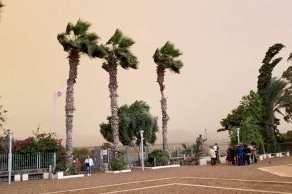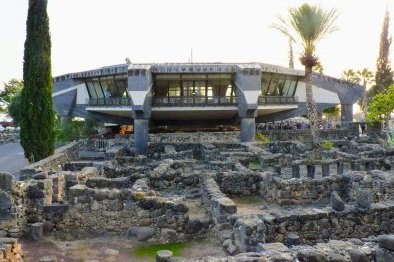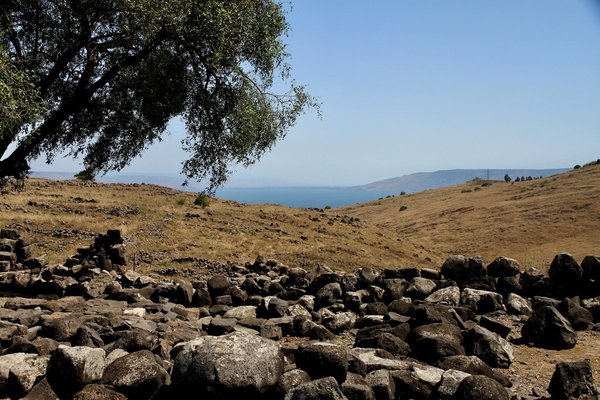Israel
Sea of Galilee
The Sea of Galilee and its ancient sites are a mixed site whose natural value consist of the lake as the main source of fresh water in the Jordan Rift Valley. The area around the Sea of Galilee has been densely populated for centuries, as evidenced by numerous ancient sites in this area. The archaeological remains of the Jewish villages of Korazim and Capernaum are specifically mentioned, as well as the town of Tabgha, which is an important site in the Christian tradition.
Site Info
Official Information
- Full Name
- Sea of Galilee & its Ancient Sites (ID: 1473)
- Country
- Israel
- Status
-
On tentative list 2000
Site history
History of Sea of Galilee
- 2000: Added to Tentative List
- Added to tentative list
- Type
- Mixed
- Criteria
Links
- UNESCO
- whc.unesco.org
All Links
UNESCO.org
- whc.unesco.org — whc.unesco.org
News Article
- Feb. 18, 2016 jewishpress.com — Jordan Valley Prehistoric Village Discovered
- July 25, 2015 haaretz.com — Discovery in Israel pushes back dawn of agriculture to 23,000 years ago
Community Information
- Community Category
- Natural landscape: Rivers, Wetlands and Lakes
- Archaeological site: Near Eastern
Travel Information
Recent Connections
News
- jewishpress.com 02/18/2016
- Jordan Valley Prehistoric Village …
- haaretz.com 07/25/2015
- Discovery in Israel pushes back da…
Recent Visitors
Visitors of Sea of Galilee
- AC
- Alberto Rodriguez Gutierrez
- Alexander Lehmann
- alicemears
- Ammon Watkins
- Argo
- Ask Gudmundsen
- Assif
- BaziFettehenne
- bergecn
- Cezar Grozavu
- Daniel Chazad
- Danieljbromberg
- dankir
- Deffra
- Dennis Nicklaus
- Dimitar Krastev
- Dirk-pieter
- Eric Lurio
- Erik Jelinek
- Evgenii
- GabLabCebu
- Geert Luiken
- George Gdanski
- Hughes1920
- Jan Zimmermann
- Jawnbeary
- Jay T
- Jeanne OGrady
- J_neveryes
- João Aender
- John Smaranda
- Jon Opol
- Kurt Lauer
- Lara Adler
- Lindaflat
- Ludvan
- Maciej Gil
- Małgosia Łupicka
- Martina Rúčková
- Matthewsharris
- MMM
- nan
- Petri Jurescu
- Roger Ourset
- Roman Raab
- Rudegirl
- S. Anril Tiatco
- Sergio Arjona
- sncjob
- Solivagant
- StaziG
- stephanvermeulen
- Szabolcs Mosonyi
- Szucs Tamas
- Thomas Buechler
- Thomas van der Walt
- Tom Flaten
- tony0001
- Truls Brekke
- Tsunami
- Vanessa Buechler
- Vernon Prieto
- Veronica
- WalGra
- Walter
- Wojciech Fedoruk
- Xiquinho Silva
- YaroMir
- Zach
- Zizmondka
Community Reviews
Show full reviews
My dad had always had this question about the Bible: Why is it that the Sea of Galilee, being a relatively small lake, have such violent storms for Jesus to calm? Well, in April 2018, my family and I experienced those storms first hand. The night before, we had checked in at the Pilgerhaus, literally a pilgrim's inn founded and run by German missionaries. The next day, our packed itinerary indeed included important pilgrimage sites, notably Capernaum and the 2 old churches in Tabgha. We were, however, in for a bit of a surprise.
As afternoon came, the sky started turning brown and orange, and the rain started pouring heavily. Brown rain. Staining the car's windows and my raincoat. We were in for what the locals called a "dirty rain", which occurs when storms coming from the Red Sea pick up dust from the Negev Desert. The heavy rain and strange color of the whole place was accompanied by strong winds. I nearly had my raincoat ripped off me! It was then that it occured to us just how crazy the weather can get at this lake.
The Sea of Galilee is located in the Jordan Rift Valley, and it's fed and drained by the Jordan River. It's over 200 meters below sea level, which makes mere hills (in relation to sea level) appear quite tall, especially the Golan Heights on the other side of the lake. I reached the lake at 2 sites, at the shores near …
Keep reading 0 comments
As Assif indicates in his earlier review, the extent of this site in relation to others on Israel’s T List is not clear. Among other mentioned sites, we visited that of Capernaum and I will limit this review to it. Now, the ancient site of Capernaum features in the descriptions of 3 of Israel’s T List sites. This one, the “Galilee Journeys of Jesus” and the “Early Synagogues in the Galilee”. Whether it would ever be intended to appear in 3 different inscriptions if Israel should be so lucky I know not.
First a warning – our National Parks Pass included entry to somewhere called “Capernaum”. When we reached the approximate area for the site as marked on our map, we gaily drove until we saw the National Park logo/sign for “Capernaum” and drove into a large car park with paths leading down to the lake – and it was all “free” even without a pass!! However, after some wasted time wandering about but finding nothing of relevance we contacted an NP employee to discover that this was the wrong place! As the NP Web site for “Capernaum” states “The main area of the national park, which covers approximately 80 dunams (20 acres), is northeast of the antiquities site. The INPA has prepared the area to assist and complement the visit to the antiquities. The national park will become part of the new promenade, 3.5 km long, which connects Capernaum and Ein Sheva (Tabgha). A dock has …
Keep reading 0 comments
I cannot find out what exactly the proposed area should include. The Sea of Galilee, regardless of its Chritsian holy status, is indeed surrounded by numerous ancient sites. Their intergrity is questionable though, mainly due to the fact that some of the territory (the Golan hights) is internationally considered as an occupied Syrian territory. On the Israeli (internationally recognised) side several sites (Capernaum, Hurvat Minnim, Hammat Tiberias) are already proposed under other titles (ancient synagogues, Christian pilgrim routes and Hurvat Minnim respectively).
Tiberias is now a modern town, its historic Mamluk-Ottoman centre having been almost completely demolished by the Israeli army during the 50s. Whatever is left of it is far from impressive and lacks integrity. New excavation of Roman Tiberias are underway at what is now called Barko Park. There is not much to see there yet. Nearby Hamat Tiberias offers a nice synagogue mosaic, but it is not mentioned in the description.
Capernaum is a popular pilgrim site and boasts a magnificent marble synagogue as well as the remains of a Roman settlement. Tabgha features two churches with archaeological findings - the mosaic of the Bread and Fish is the better known of the two. There is now a scenic walk along the shore connecting Tiberias and Capernaum passing through Tabgha and Hurvat Minnim.
As you can probably sense reading my review, I cannot really grasp the unifying element that would justify a common inscription of the sites, but maybe a more detailed description would …
Keep reading 0 comments
